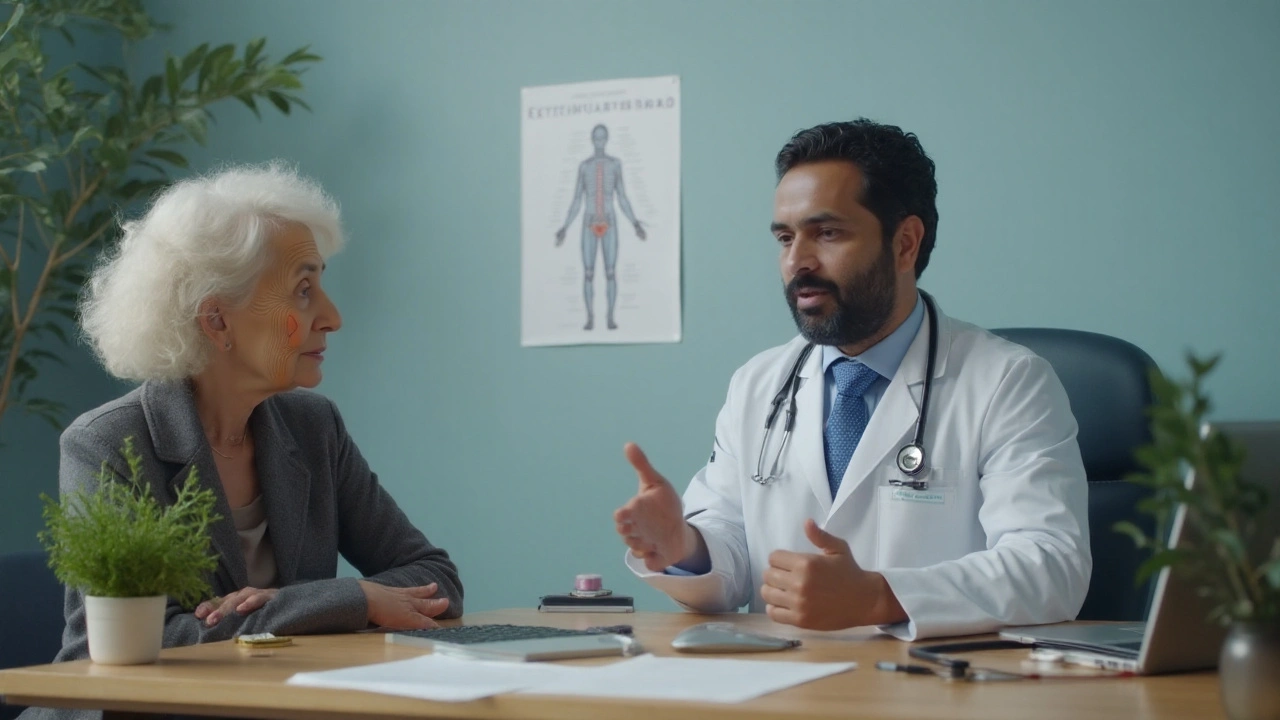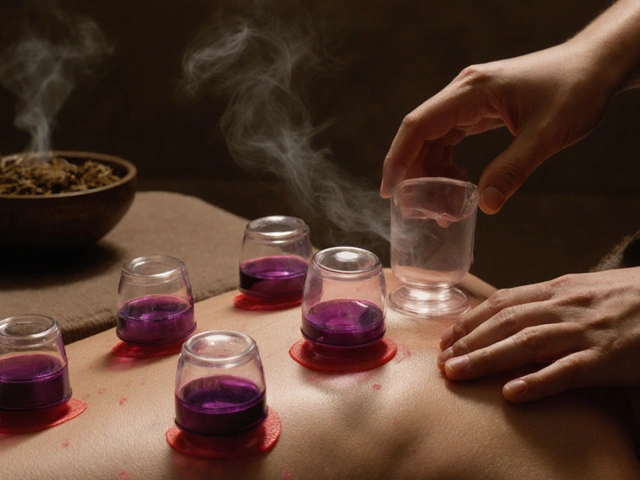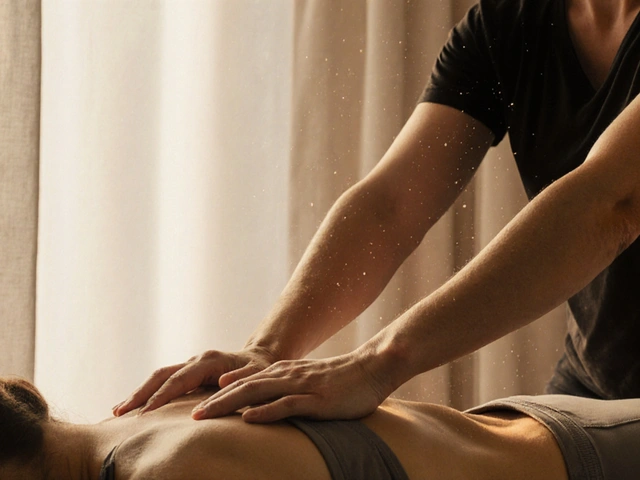Polarity Therapy Guide: Energy Healing Basics, What to Expect & Safety

You want a grounded way to explore energy work without hype. You also want to know what’s real, what’s speculative, and what you’ll actually feel on the table. If you’re curious about Polarity Therapy but wary of big promises, this guide gives you both sides: the traditional model and current evidence, plus simple steps to try it safely.
- TL;DR: Polarity therapy is gentle touch-based bodywork rooted in an energy model; people seek it for stress, sleep, and pain perception. Evidence is limited; safety is generally good.
- What happens: You stay clothed. The practitioner uses light to firm touch, holds, and stretching, often with breath cues. Sessions last 60-90 minutes.
- Who it helps: Those looking for relaxation, body awareness, and support alongside standard care. Not a replacement for medical treatment.
- How to choose: Look for APP/RPP credentials (American Polarity Therapy Association), ask about scope, and start with one session before buying packages.
- DIY: Try brief hand placements and breath pacing at home. Stop if you feel dizzy, nauseated, or emotionally flooded.
What It Is, How It Works, and What the Evidence Says
Polarity therapy is a holistic bodywork system created by osteopath and chiropractor Dr. Randolph Stone in the mid-20th century. The approach blends light-touch contact, specific point work, gentle stretching, and simple movement and breath cues (“polarity yoga”). It’s framed around a natural “energy” model: that the body has dynamic charges and flows that can get stuck under stress or illness. The goal is balance, not force. Practitioners use a mix of light, medium, and firm touch to nudge the body toward ease.
In practical terms, it feels like this: you lie on a massage table fully clothed. The practitioner places hands quietly at the head and feet, or over the belly and back. You might notice warmth, tingling, a wave of calm, or nothing at all-both are common. Some sessions include gentle rocking or simple assisted movements. It’s not a deep-tissue massage, and it’s not acupuncture; it sits somewhere between structural bodywork and meditative touch.
Where the ideas come from: Stone adapted concepts from manual therapy, Ayurveda’s five elements (ether, air, fire, water, earth), and basic electrical metaphors (positive/negative poles). He mapped reflex points and flow pathways similar in spirit to meridians or myofascial lines. Whether you accept the energy model or not, the method is designed to shift your nervous system into rest-and-digest mode, which can bring down stress and soften habitual tension patterns.
What the science says in 2025: research specific to polarity therapy is small and mixed. There are pilot studies and small randomized trials in areas like stress and cancer-related fatigue, but sample sizes tend to be limited and methods vary. The U.S. National Center for Complementary and Integrative Health (NCCIH) generally classifies energy-based touch therapies as having insufficient evidence for most medical conditions. Massage and acupuncture have a larger research base; polarity’s is still emerging.
That said, several things are reasonable to expect:
- Relaxation and better perceived stress. Gentle touch plus a quiet setting often lowers sympathetic arousal, which can help with sleep and mood.
- Body awareness. Slow, attentive contact helps people notice breath, posture, and tension habits.
- Complementary support. Some clients report easier coping with pain or treatment stress when polarity sessions are paired with standard care.
What not to expect: polarity therapy is not a cure for disease. It should not replace medical evaluation, meds, physical therapy, or psychotherapy when those are indicated. Think of it as nervous-system support and mindful bodywork-valuable, but within its lane.
Safety: For most healthy adults, polarity therapy is low-risk. It uses conservative, non-invasive touch. Common after-effects include sleepiness, a “post-session float,” or mild soreness similar to a relaxing massage. Red flags: if you have an unstable medical condition, a fresh injury, a fever, a pacemaker, active cancer treatment without your care team’s knowledge, or a complex trauma history, talk to your clinician first and tell the practitioner before the session. Pregnant clients can receive polarity therapy, but certain abdominal positions or vigorous pelvic work are avoided; choose a practitioner with prenatal experience.
Credentials and standards: The American Polarity Therapy Association (APTA) publishes competencies, a code of ethics, and training pathways. Many schools align with APTA standards. As of recent guidelines, there are two common credentials: Associate Polarity Practitioner (APP) and Registered Polarity Practitioner (RPP). Training hours vary by school, but the ranges below are typical.
| Modality / Track | Core Training Hours | Typical Session Length | Common Cost (US) | Evidence Snapshot |
|---|---|---|---|---|
| Polarity Therapy (APP) | ~150-200 hours | 60-75 minutes | $70-$120 | Limited; preliminary studies; more research needed |
| Polarity Therapy (RPP) | ~600-700 hours | 75-90 minutes | $90-$150 | Limited; practitioner skill varies by training depth |
| Reiki (Level II) | ~16-24 hours (varies widely) | 45-60 minutes | $60-$120 | Limited; some studies on relaxation and anxiety |
| Therapeutic Massage (Licensed) | ~500-1,000 hours (state dependent) | 60-90 minutes | $80-$160 | Moderate for short-term pain, stress |
| Acupuncture (Licensed) | ~2,000-3,000 hours (program-based) | 45-60 minutes | $80-$150 | Moderate for some pain and nausea conditions |
How to read this: If you want a light-touch, meditative session, polarity or Reiki fit. If you want structural change, licensed massage or physical therapy is more direct. If you want a modality with stronger clinical data for specific pain conditions, acupuncture and massage have more published evidence than energy-only work. Even so, the right match depends on your goals, body, and provider skill.

What to Expect in a Session (Plus DIY Moves You Can Try Safely)
Here’s the play-by-play so there are no surprises.
Before you book:
- Check training: APP or RPP credentials. Browse their bio for trauma-informed or prenatal experience if relevant to you.
- Ask about scope: They should say they don’t diagnose or replace medical care. Clear boundaries are a green flag.
- Confirm logistics: Session length, price, cancellation policy, and whether you remain clothed (you do).
On arrival:
- Intake chat: You’ll share your goals (stress, sleep, pain, digestion), history, and any red flags (injuries, pregnancy, devices).
- Clothing: Wear soft, comfortable layers. Remove shoes, keep everything else on.
- Setup: You’ll lie on a massage table; there may be light blankets and bolsters.
During the session:
- Opening holds: The practitioner often starts with quiet contact at the head and feet or hands and shoulders to settle your system.
- Touch variation: Expect a mix of light holds, medium contact, and occasional firmer point work, plus gentle stretching or rocking.
- Breath cues: You may be asked to take a slow inhale, a longer exhale, or to notice where breath moves in your body.
- Areas of focus: Common regions include the belly (digestion, stress), low back/pelvis (grounding), chest (breathing), and neck/jaw (tension).
- What you feel: Warmth, tingling, heaviness, late exhale sighs, or a sense of dropping into rest. If anything hurts or triggers emotion, say so-the pace can change.
After the session:
- Grounding: Sit up slowly. Drink water. Give yourself 10 minutes before driving.
- What may happen: Better sleep that night, calmer mood, or mild soreness like after a gentle yoga class.
- When to check in: If you feel unwell, dizzy, or emotionally flooded for more than a few hours, contact the practitioner and consider talking to your clinician.
How many sessions: If your goal is basic stress relief, try 1-3 sessions spaced 1-2 weeks apart and see if you notice changes in sleep, mood, or tension. For longer-standing patterns, people often book 4-6 sessions, then taper to monthly or as-needed. Avoid buying big packages up front; take it session by session until you know it’s helping.
DIY polarity-inspired moves you can try at home (no tools):
- Hand-on-heart, hand-on-belly: Place one hand over the center of your chest, the other over your lower abdomen. Inhale for a count of 4, exhale for 6-8, for 3-5 minutes. Good for settling jitters before sleep or meetings.
- Head-to-hara reset: One hand lightly at the crown of your head, the other on the lower belly. Slow your breath. Notice any shift in jaw and shoulders. 2-3 minutes.
- Foot sandwich: Sit in a chair. Place one hand under your foot and the other on top. Hold, breathe, then switch feet. Helps people who feel “ungrounded.”
- Cross-crawl unwind: March in place slowly, touching right hand to left knee and left hand to right knee. 1-2 minutes. This can rebalance left-right patterns.
- Element breath (simple version): Imagine breath starting high in the chest (air) and settling low into the belly/pelvis (earth). Longer exhales encourage the downshift.
Safety notes for DIY:
- Stop if you feel dizzy, numb, or overwhelmed. That’s a sign to rest or get guidance.
- Avoid strong abdominal pressure if pregnant or right after meals.
- For trauma histories, keep eyes open, move slower, and stay seated. Choice and pacing matter more than technique.
How polarity complements other care:
- With physical therapy: Polarity can help downshift the nervous system so your PT exercises feel easier to integrate.
- With psychotherapy: Gentle touch can surface emotions; coordinate with your therapist if you’re in active trauma work.
- With medical treatment: Tell your care team. If you’re in chemo or radiation, ask about timing around infusion days.

How to Choose a Practitioner, Costs, Red Flags, and Next Steps
Picking the right person matters more than perfect technique. Use this quick framework.
Decision rules of thumb:
- If you want deep structural change right now: start with licensed massage or PT, then add polarity for regulation.
- If you’re exhausted, anxious, or sleep-deprived: polarity is a gentle first step.
- If research evidence is your top priority: acupuncture or massage have more published data than energy-only work.
Credentials and questions to ask:
- Training: Do you hold APP or RPP credentials aligned with APTA standards? Where did you train and when?
- Scope: Do you diagnose, claim to cure, or advise on meds? (Correct answer: no.)
- Experience: Do you have experience with my specific concern (stress, pregnancy, chronic pain, cancer support)?
- Approach: How do you adjust touch for sensitive clients or trauma histories?
- Hygiene and policy: How do you sanitize the table and linens? What’s your cancellation policy?
Costs and logistics in 2025:
- Typical price: $70-$150 per session in the U.S., depending on training and location. Big-city prices skew higher.
- Length: 60-90 minutes. First sessions may be longer due to intake.
- Insurance: Traditional insurance rarely covers polarity therapy. Some HSA/FSA plans may reimburse with a letter of medical necessity-ask your benefits provider.
- Packages: Don’t prepay large packages until you’ve tried 1-2 sessions and notice benefit. Good practitioners won’t pressure you.
- Remote sessions: Some offer distance sessions. Treat them as guided relaxation or coaching; evidence for distance energy work is sparse.
Red flags (walk away):
- Promises to cure disease or replace your doctor.
- Diagnosing medical conditions without a license.
- Unclear boundaries around touch or draping.
- Pushy sales tactics or big prepaid packages before you try a single session.
- No intake, no consent, or resistance to your questions.
Pre-session checklist:
- Eat light 1-2 hours beforehand; skip heavy meals and alcohol.
- Wear soft clothes you can move in.
- List your meds, conditions, surgeries, and goals.
- Decide your boundary: Any areas you’d rather avoid?
- Plan 10-15 minutes buffer after the session before racing back to work.
Post-session checklist:
- Hydrate and have a light snack if you feel floaty.
- Go for a slow 10-minute walk to integrate.
- Jot a few notes: sleep quality, mood, pain level over the next 48 hours.
- Schedule the next session only if you noticed meaningful benefit (better sleep, calmer head, easier breath).
Compare polarity therapy to similar options (quick view):
| Modality | Touch Style | Focus | When It Shines | Consider Instead If... |
|---|---|---|---|---|
| Polarity Therapy | Light to moderate holds; gentle stretches | Nervous system regulation; energy balance | Stress, sleep, body awareness | You want targeted muscle release right now |
| Reiki | Very light or off-body | Calm, meditative state | Anxiety, pre-op jitters, end-of-day reset | You need movement or structural change |
| Therapeutic Massage | Moderate to deep tissue | Muscle tension, circulation, pain relief | Stiff neck, sore back, sports recovery | You dislike firm pressure or soreness |
| Acupuncture | Needle-based; minimal sensation | Systemic balance; pain modulation | Headaches, chronic pain, nausea | You want a no-needle session |
Mini-FAQ:
Is polarity therapy safe if I’m pregnant? Usually yes, with modifications and an experienced practitioner. Avoid strong abdominal work and certain pelvic contacts. Always tell your provider you’re pregnant.
Can it help chronic pain? It may help with stress and body awareness, which can change how pain is experienced. For mechanical issues, pair it with physical therapy or targeted massage. Do not stop prescribed treatments.
What if I feel emotional on the table? That can happen. You’re allowed to pause, change positions, or stop. A good practitioner will help you ground and will refer you to a therapist when needed.
How fast will I notice benefits? Some feel calmer right away; others notice better sleep that night. If you don’t feel any shift after 2-3 sessions, it may not be your modality-or you may need a different provider.
Is the energy real? The energy model is a framework. What’s measurable right now is the downshift in arousal, breath changes, and the psychological effect of supportive touch. If the model helps you relax and reconnect, it’s doing its job.
Can I combine it with meds or therapy? Yes. Tell your clinician and therapist. Polarity is a complement, not a replacement.
Next steps and troubleshooting by scenario:
- If you’re skeptical but curious: Book one 60-minute session with a seasoned RPP. Ask them to keep it simple: light contact, breath, and clear explanations. After, rate your sleep and stress over two nights. If nothing moves, try massage or acupuncture instead.
- If you have chronic stress and can’t sleep: Schedule three sessions two weeks apart. Do the hand-on-heart/hand-on-belly practice nightly for 5 minutes. Track sleep onset time and night awakenings. Adjust based on results.
- If you have chronic pain: Keep your medical team in the loop. Combine polarity with PT or a gentle yoga class. Aim for one polarity session every 1-2 weeks for a month; watch for changes in flare frequency and intensity, not just instant pain scores.
- If you’re pregnant: Choose a practitioner with prenatal experience. Use side-lying positions. Keep sessions shorter (45-60 minutes) if you tire easily.
- If budget is tight: Look for student clinics at polarity schools or community wellness centers. Try the DIY holds daily for two weeks before investing in paid sessions.
- If you have a trauma history: Ask for consent-based, opt-in touch. Keep eyes open, feet grounded, and request that the practitioner names each touch before contact. Shorter, more frequent sessions may be better than long ones.
Credibility notes: The American Polarity Therapy Association sets education and ethics standards for APP and RPP levels. The NCCIH summarizes the current state of evidence for energy-based touch approaches as limited and mixed. Massage and acupuncture have broader research support for certain conditions like short-term pain and anxiety; energy-only methods, including polarity therapy, show promise for relaxation and quality-of-life measures but need larger, well-designed trials.
If you’re drawn to the gentler side of bodywork, polarity therapy offers a calm, structured way to listen to your body and breathe again. Give it a fair test, stay honest with your results, and keep your healthcare team in the loop. That blend-curiosity plus caution-serves you best.





